Ukraine: to save biodiversity
Why does Ukraine need to introduce the EU Birds and Habitats Directives and how will this change the environmental protection system in the country?
In the last few hundred years, the world in which we live has changed unrecognisably. Undoubtedly, this has many advantages: life became more comfortable, convenient, more interesting and even somewhat safer. At least the lifespan of Homo sapiens substantially increased. However, in conquering new peaks, humanity has barely even noticed how much it has managed to lose, practically finding itself at a verge, in the build-up to which, if we do not slow down, everything could end deplorably. The numerous challenges that the planet’s residents face are no longer just scary stories.
Excessive interference with the natural environment, violation of its conditions and laws, as well as uncontrolled pollution not only cause the loss of biodiversity, but also primarily endanger the very existence of human beings. For instance, the disappearance of certain species of insects may at first seem insignificant in the global scheme of things, something that is not even worth thinking about, but breaking the balance is always bad. Nobody really knows what catastrophe this interference could lead to, or how humans will have to pay for it eventually. The speed with which various animals and plants are disappearing from the world continues to increase. According to the data of the International Union for Conservation of Nature (IUCN), in Europe alone, 15% of mammals, 13% of birds, 37% of freshwater fish and 23% of amphibians are in danger of extinction.
Of course, it is impossible to turn back time and correct the mistakes. However, we can at least stop the process of destruction and try to preserve nature at least in the condition it is in today. Why? Because biodiversity is a natural heritage which needs to be passed on to our children and future generations, taking into account its value and the ecosystem services it provides (provision of food, purification of air and water, pollination of plants and recreation). This is a global task and, of course, not a single country is able to handle this on its own. Only common efforts and systematic work will suffice.
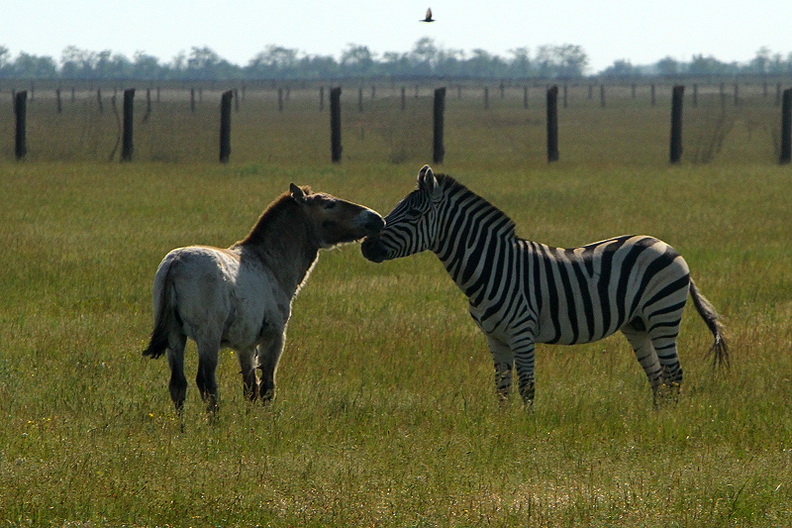 A zebra and a Przewalski’s horse. Biosphere Reserve ‘Askaniya-Nova’, Kherson Region of Ukraine (Credit: Roman Malko)
A zebra and a Przewalski’s horse. Biosphere Reserve ‘Askaniya-Nova’, Kherson Region of Ukraine (Credit: Roman Malko) Cranes. Biosphere Reserve ‘Askaniya-Nova’, Kherson Region of Ukraine (Credit: Roman Malko)
Cranes. Biosphere Reserve ‘Askaniya-Nova’, Kherson Region of Ukraine (Credit: Roman Malko)
The post-Soviet system of “nature reserves” that exists in Ukraine today did not prove to be effective. We will not be able to save the country’s biodiversity only by using the system of prohibiting human activities only on certain territories. The proportion of the natural reserve territory is not substantial, at 6.8%, but birds and animals do not only live there, and they do not care where the reserve’s border ends and whether it is safe for them to be there or not. They are used to living in places where they are comfortable. And the human beings’ job, if they really want to preserve everything they have not yet killed, is to facilitate this. Of course, nature reserves, sanctuaries and parks will not go anywhere; they will function simultaneously, the same way they do Europe, where national systems in all countries operate independently from the network of protected areas, but this is a different story.
According to Vasyl Kostyushyn, the deputy head of the monitoring and fauna protection department at the I. I. Schmalhausen Institute of Zoology of the National Academy of Sciences of Ukraine, the country’s system in the field of nature conservation is far from ideal.
“We [in Ukraine] have a system of protected areas, but it is quite weak,” says Kostyushyn. “Its area is small, as it occupies about 6% of the country’s territory and 3% of these areas are reserves and tracts that are not controlled in any way. In other words, they are something that the land users are responsible for, who, in reality, are not held responsible at all.
Kostyushyn says that only 3% of areas which are classified as regional or national parks and biosphere reserves have their own staff and security. Thanks to that, the preservation work is carried out there to some extent. “There is a ‘Red Book of Ukraine’ (a Ukrainian version of the Red List of Threatened Species), but it does not really work, except when we use it to list the species to create new protected areas (or ‘objects’). However, the protection of these species is not ensured by anything,” adds the expert.
The Ministry of Ecology and Natural Resources alone is responsible for about 40 national parks, on which, according to Kostyushyn, “dozens of millions of hryvnyas are spent annually”.
“I have always had a question as to how it affected the existence of the ‘Red Book’ species and why their numbers have increased. There is no information on this,” adds the expert. “I am not even speaking about the rest of the 8,000 objects, which include other reserves and natural boundaries. When they are created, then there is information that there are certain threatened species of animals or plants included there, but nobody really knows what happens to them in ten years’ time.”
For many years, the EU has had a system which has proved its effectiveness and which aims at the protection of nature in the condition it is in. Now, Ukraine is joining it in trying to develop the respective mechanisms on its territory too. And this is done not only because by signing the Association Agreement with the EU, Ukraine is obliged to take measures to approximate the national legislation in the nature conservation sector as part of two EU Directives (№ 2009/147/EC the Council Directive on the conservation of wild birds and the Council Directive 92/43/EEC on the Conservation of natural habitats and of wild fauna and flora (the ‘Birds and Habitats’ Directives). The country is doing it primarily because this is a great opportunity to bring in order its affairs in the field of nature protection.
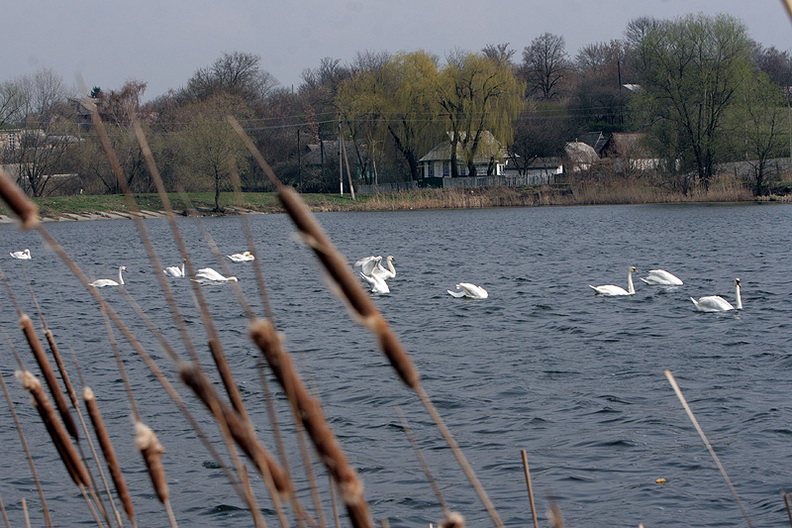 Swans. Kyiv Region, Ukraine (Credit: Roman Malko)
Swans. Kyiv Region, Ukraine (Credit: Roman Malko)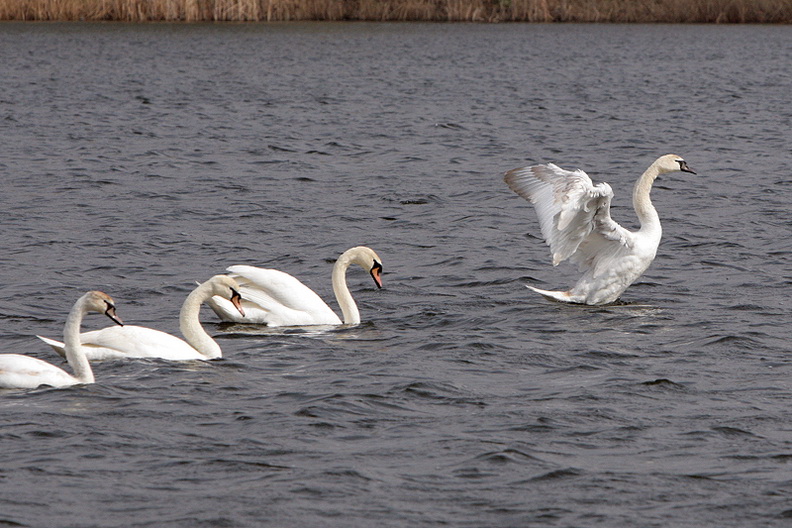 Swans. Kyiv Region, Ukraine (Credit: Roman Malko)
Swans. Kyiv Region, Ukraine (Credit: Roman Malko)
What they are about
In 1979, the Bern Convention was adopted to facilitate international cooperation on the conservation of wild flora and fauna and their natural habitat. To facilitate its implementation, a special instrument to protect the environment – the Emerald Network of Areas of Special Conservation Interest – was created in 1989. The aim of the Network is to ensure the long-term survival of species and natural habitats of European interest that require special conservation measures. As an environmental network, it represents a system of interconnected coherent territories that are subject to management, monitoring and accounting. The Network is to be set up in each Contracting Party or Observer State to the Convention. Fifty countries and the European Union ratified the Bern Convention. It therefore involves all 28 EU Member States, 18 other European countries and 4 African states. Alongside this, as a contribution to the Emerald Network, EU countries have their own environmental network, ‘Natura 2000’. Both networks are compatible and cooperate successfully. At the moment, out of 3,500 protected areas, 271 are located on the territory of Ukraine and belong to the Emerald Network.
How does the system work?
Scientists identify territories that are important for the conservation of species and habitats and require special attention. Having analysed information about each species or habitat (listed in Resolutions adopted by the Bern Convention) that need to be protected and having developed a map of the species’ or habitat location, they define the most critical points for their survival in the long-term, to be included in the network. As a second step, European experts assess at biogeographical level the capacity of the sites identified to maintain the species and habitats in a favourable conservation status. At the moment, 283 species (26 fish species, 49 invertebrates, 26 mammals, 60 plants, 112 birds, 6 amphibians and 4 reptiles) and 116 habitat types listed in the Resolutions of the Bern Convention occur in Ukraine (Source: 2016 Consolidated conclusions of the Emerald Network database).
There is no need to protect the entire territory connected with a certain species – only places which really provide migration routes or reproduction areas, and so on. Of course, the analysis is carried out not only within the borders of one country, but in the neighbouring countries as well. This way, species after species, habitat after habitat, the picture of the country – within the limits of a bio-geographical region and within Europe – is painted. Later, these territories are known as Emerald Network sites and in the EU they are called the Natura 2000 sites.
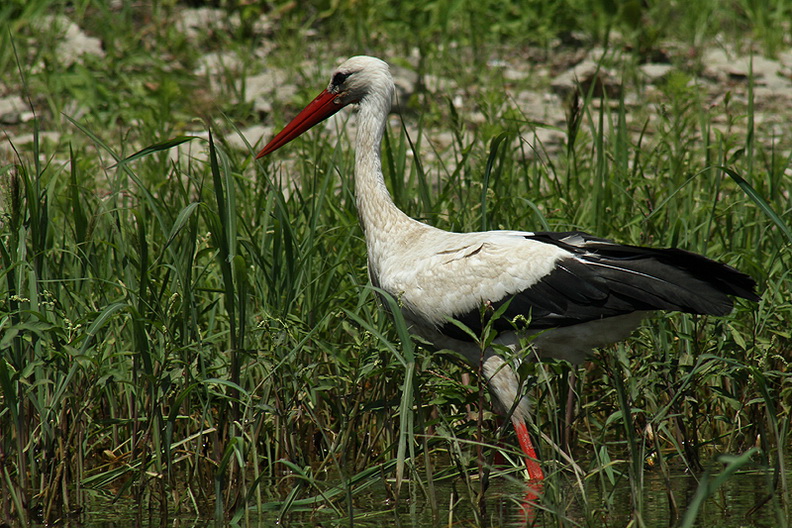 Stork. Khmelnytskyy Region, the Dniester Canyon, Ukraine (Credit: Roman Malko)
Stork. Khmelnytskyy Region, the Dniester Canyon, Ukraine (Credit: Roman Malko)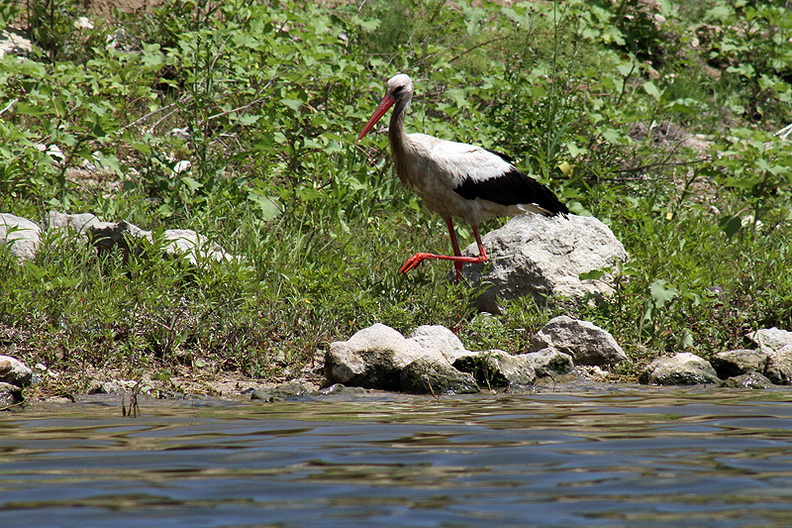 Stork. Khmelnytskyy Region, the Dniester Canyon, Ukraine (Credit: Roman Malko)
Stork. Khmelnytskyy Region, the Dniester Canyon, Ukraine (Credit: Roman Malko) Buffalos. Biosphere Reserve ‘Askaniya-Nova’, Kherson Region of Ukraine (Credit: Roman Malko)
Buffalos. Biosphere Reserve ‘Askaniya-Nova’, Kherson Region of Ukraine (Credit: Roman Malko)
Officials at the country’s Ministry of Ecology and Natural Resources say that the identified territories do not become closed off automatically, like reserves do. These territories can include farmlands, fields and gardens. If it is private land, this is not a problem either. After researching what needs to be done in order for a specific animal species or habitat to be comfortable on a certain territory, scientists create a management plan, according to which they can say that nothing special needs to be done on that territory. If the species or habitats are doing well there, then no limitations need to be introduced. If scientists decide that there must be some limitations introduced, for instance that it is better to cut grass in June rather than in May in order to save certain birds or insects, which nest on the ground, then they will have to agree certain concessions with the land owner. The damages can even be compensated to owners, provided they can prove that they suffered losses, but only for the type of activity that the scientists banned. In Ukraine, this mechanism is also included in the law, but it is not yet in operation.
Another mechanism which is already in operation is an environmental assessment which is done when projects related to the Emerald Network sites are developed. Such projects are subject to an obligatory deep scientific analysis, in order to be able to understand how the project will influence these types of habitats. If scientists say “no”, this is not definitive. The developer can later change the project, taking environmental interests into account. Alternatively, the developer can be offered the opportunity to take some compensatory measures (not financial), for example it can be suggested to restore the same habitat in another area or to protect another area in which the habitat occurs.
However, the most important point relates to the creation of a monitoring system, which is practically non-existent in Ukraine. After the collapse of the Soviet Union, the system of gathering information, analysis and financing disappeared. We do not know what is happening with our species and habitats, and now we are trying to recreate the system again. If there is no monitoring, then all these actions will not make any sense, because we will not know how they influence the environment.
“If we speak about European approaches, the Bird and Habitats Directives and the Bern Convention through its Resolution No. 8(2012), it is foreseen by them that every six years each country should clearly report what is happening to a specific species or habitat and to a system on the whole,” says Kostyushyn. “In order to be able to answer these questions, we need to invest in the monitoring of the conservation status of species and habitats of the Emerald Network sites.”
Therefore, the creation of the information gathering systems for the entire country, carrying out information analysis in line with international standards and proper use is another important and, probably, the most difficult, of all tasks. To address these challenging tasks, Ukraine benefits from cooperation with the European Environmental Agency through a project funded by the EU. This work supports the development of harmonised data flows and the implementation of regularly updated and comparable indicators on the state of biodiversity and on conservation measures.
Most EU Member States have created a separate agency to deal with these issues. Ukraine used to have the State Service for Reserve Affairs, which could have worked on this, but it was closed. Now, 21 state employees take care of all the protected areas in the country. There are also the staff members of reserves and national parks. However, this is a very small number of people in charge compared to other territories. Only a month ago, some authority was transferred to regions, so that their specialists would be able to work on this. However, so far, there is unfortunately no political desire or possibility to create an agency.
 The Dniester River near Bakota, the Dniester Canyon, Khmelnytskyy Region of Ukraine. (Credit: Roman Malko)
The Dniester River near Bakota, the Dniester Canyon, Khmelnytskyy Region of Ukraine. (Credit: Roman Malko) Heron bird at the Dniester Canyon, Khmelnytskyy Region of Ukraine. (Credit: Roman Malko)
Heron bird at the Dniester Canyon, Khmelnytskyy Region of Ukraine. (Credit: Roman Malko)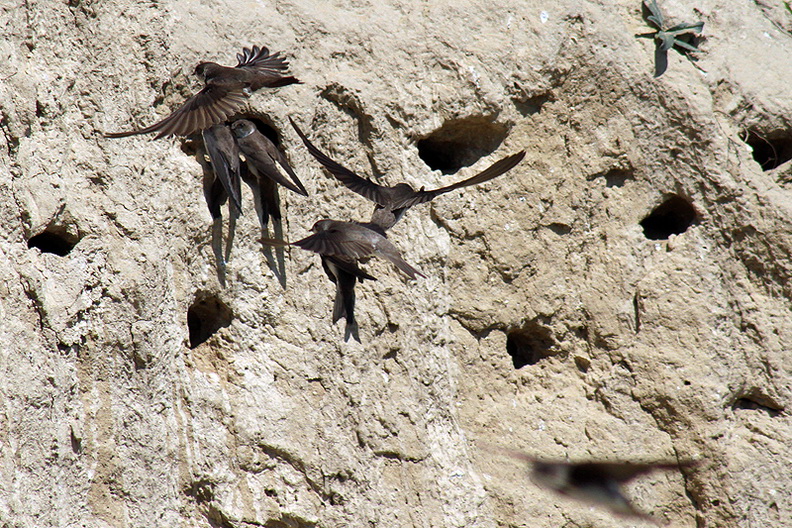 Swallows’ nests at the Dniester Canyon, near Bakota. (Credit: Roman Malko)
Swallows’ nests at the Dniester Canyon, near Bakota. (Credit: Roman Malko)
The Emerald Network of Ukraine
The lists of Emerald Network sites of Ukraine, Belarus, Georgia, Norway and Switzerland were confirmed at the 37th meeting of the Standing Committee to the Bern Convention in 2017. The Ukrainian list consists of 271 territories, with an area of 6.2 million hectares representing 10.4% of Ukraine’s territory. According to officials from the Ministry of Ecology and Natural Resources, this Network is not complete and needs to be expanded, by looking for new territories to save certain species and natural habitats for which the Bern Convention identified an inadequate level of representation in the network of proposed protected areas at the bio-geographical seminars. The public initiative Emerald-Natura 2000 in Ukraine has started preparing a so-called ‘shadow list’ of territories that it suggests be included in the Emerald Network in Ukraine. So far, the Ministry has received proposals for 95 new objects, spanning a total area of over 2 million hectares.
In Ukraine, the Network has been in the process of development since 2009, but only recently has it started to have more specific outlines. At the moment, there are five respective projects which have either already ended or are currently being implemented. They refer to: the definition of candidate territories; the degree of compliance of Ukrainian legislation with the requirements of the Birds and Habitats Directives, the definition and classification of types of habitats (introduction of EU standards and methodologies); the approximation of the developed EU legislation in the field of the environment; and support in the implementation of the Association Agreement (drafting legal acts and organising training for scientists, government officials and the public).
As for the legislative support, the draft law of Ukraine on ‘Territories of the Emerald Network’ was developed and submitted for consideration. The law has to ensure the functioning of a network of protected areas close to the Natura 2000 network which exists in the EU. At the same time, work on introducing changes to the existing legislation is being carried out so that the changes can promote better preservation of certain species, for instance the changes to hunting restriction regulations, which have already been made.
Undoubtedly, all this requires serious financial means. The development and implementation of the management plans for the Emerald Network project alone require €18.8 million or €1.9 per year for the next ten years. Experts say that expenditure will decrease, since management plans can be part of other project documents and plans for which funds have already been allotted, but this is still a substantial amount. The state covers some expenses; however, it would be impossible without the support of partners. Not a single country that has already passed this was able to manage it on its own. France helped Poland, the EU helped Slovakia. Ukraine is also hoping for help from European countries, and possibly from some international agencies. Europeans are already helping Ukraine – not only with money, but with constant expert assistance too.
 Stork. Khmelnytskyy Region, the Dniester Canyon, Ukraine (Credit: Roman Malko)
Stork. Khmelnytskyy Region, the Dniester Canyon, Ukraine (Credit: Roman Malko)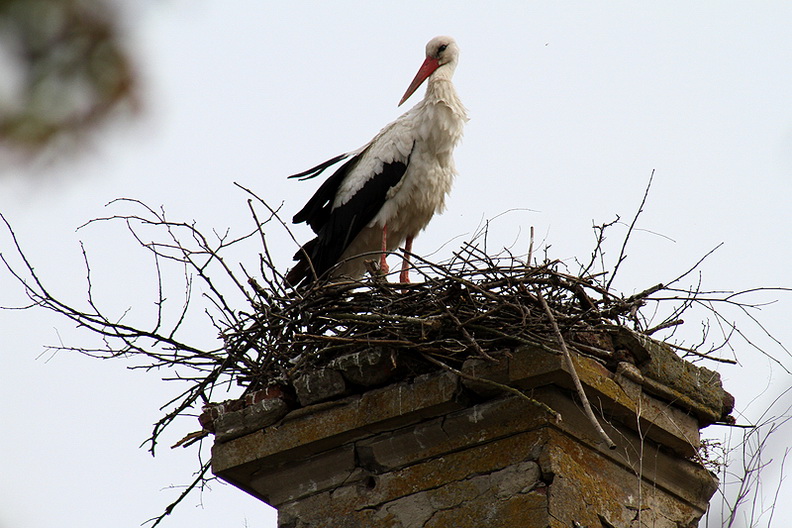 Stork in a nest. Ternopil Region of Ukraine, Okopy village. (Credit: Roman Malko)
Stork in a nest. Ternopil Region of Ukraine, Okopy village. (Credit: Roman Malko)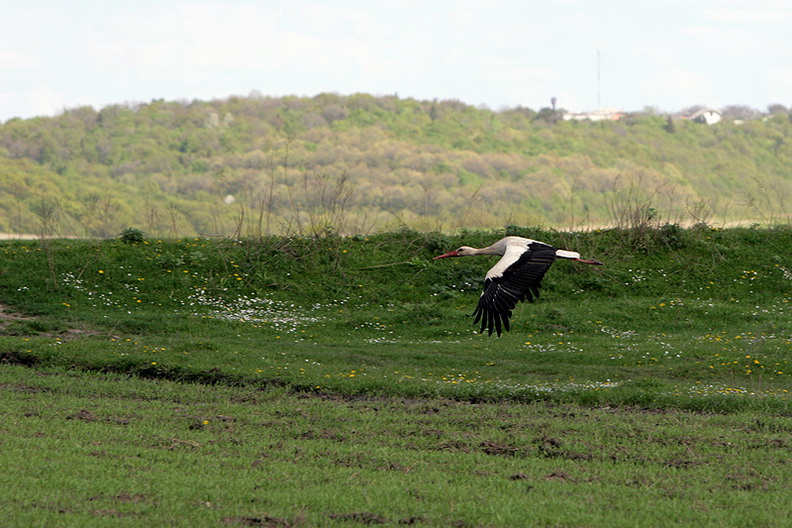 Stork. Ternopil Region of Ukraine. (Credit: Roman Malko)
Stork. Ternopil Region of Ukraine. (Credit: Roman Malko)
No matter how surprising it may be, the introduction of new tools and more effective and flexible legal mechanisms for the nature protection system is not only a tribute to the need to protect and preserve the ecosystem, but will also bring economic benefits. According to data from the official EU website, the financial gain from Natura 2000 in the EU is estimated to amount to €200 to 300 billion per year.
The Network holds up to 9.6 billion tons of carbon (35 billion tons of CO2), or €600 to 1,130 billion (based on 2010 prices), while the income from visitors to the Natura 2000 territories in 2006 was €50 to 85 billion a year. In particular, in Belgium the financial gain from wetland restoration in just one Natura 2000 territory varies from €640,000 to €1.6 million per year, due to the decrease in the negative impacts of flooding. Plus, by serving visitors to Natura 2000 reserves, the EU provides 800,000 to 2 million jobs.
Author: Roman Malko
Article published in Ukrainian by “Ukrainian Week”
MOST READ
SEE ALSO

‘The Kremlin has entered the chat’: how to protect your personal data on Telegram and avoid the bait of propaganda

No, time is not on Russia‘s side

Socks for Peace: how the Vilni project is supporting internally displaced women in Ukraine
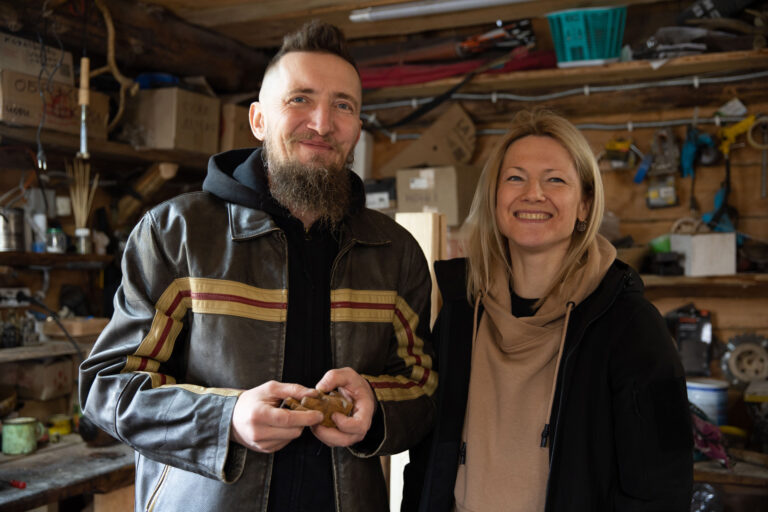
Celebrating traditional Ukrainian cultural identity in Rivne

Natalia wanted her child to escape the war: how a single mother set up a successful business in Lithuania
More campaign pages:
Interested in the latest news and opportunities?
This website is managed by the EU-funded Regional Communication Programme for the Eastern Neighbourhood ('EU NEIGHBOURS east’), which complements and supports the communication of the Delegations of the European Union in the Eastern partner countries, and works under the guidance of the European Commission’s Directorate-General for Neighbourhood Policy and Enlargement Negotiations, and the European External Action Service. EU NEIGHBOURS east is implemented by a GOPA PACE-led consortium. It is part of the larger Neighbourhood Communication Programme (2020-2024) for the EU's Eastern and Southern Neighbourhood, which also includes 'EU NEIGHBOURS south’ project that runs the EU Neighbours portal.

The information on this site is subject to a Disclaimer and Protection of personal data. © European Union,







